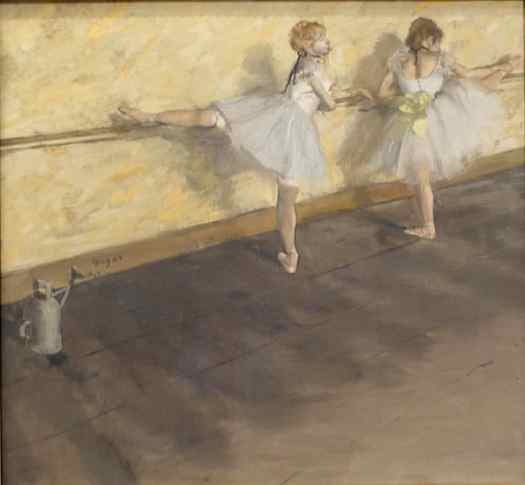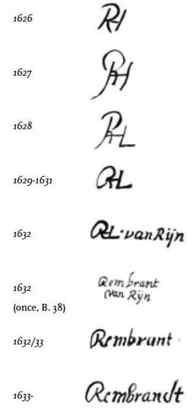These are just some of the questions about signatures asked by artists and art lovers – and below you can find a lot of the answers!
Signing & Dating Your Work


Many contemporary artists don’t sign their work on the piece itself. The signature may be concealed behind the work, on the back of the canvas, or the back of the mounting for a photograph. For some conceptual work, a signature comes in the form of a certificate of authenticity. Think about what kind of signature is right for your work. If you are confused, consult a contemporary art curator, professor, or historian. Most professional artists do not sign the work on the front of the art, so that the signature does not distract from the content of the work.
Make and sign your art in the same medium (except for prints and graphics, which are generally signed in pencil). For example, sign a watercolor in watercolor paint, an acrylic in acrylic medium, and an oil painting in oil paint. When you sign in a different medium, you increase the chances of someone eventually questioning whether or not the art was actually done by you.
Always put the edition size on limited edition graphics.
Sign all of your art in more or less the same way. Signatures should be consistent in size, coloration, location, style (written or printed), and other particulars. That way, people who do not know your art will have an easier time recognizing your work. Also, signing your name in many different ways or locations eventually makes it easier for forgers to sign art and claim that it is by you.
Dating your art minimizes any guesswork as to when something was completed. You may not think this is important now, but after you have been making art for several decades, you will understand why you need to date work. If you do not want to date your art on the front, date it inconspicuously on the back. The better known you become, the more important dates are for anyone interested in your evolution as an artist.
Do not sign on top of a varnished painting or glazed sculpture because the signature then looks like it was added later, more as an afterthought than a declaration.
Your signature should not be so bold or obvious that it interferes with or detracts from the composition. It should blend rather than contrast with its surroundings and look like it belongs in the art.
Do not scratch your signature into dried paint, ceramic, or similar media unless this is how you normally sign your art. Scratched signatures rarely blend with their art and their authenticity can easily be questioned.
WHY SIGN YOUR ART?
Try the four polls – which quiz you about YOUR artistic Practice – BEFORE before you start reading this page about signing art and artist’s signatures.
The charts BELOW demonstrate the results from the polls about signatures that I ran on my previous website for some years. I now run the polls on Crowd Signal.
You can check more recent results by clicking ‘view results’ under each poll.
How to sign art – the artists’ perspective
What follows are the views of other artists – expressed via a number of polls I ran on another website.
- size and location of the signature
- whether you plan your signature in advance
- whether or not to date your artwork
SIZE & LOCATION OF THE ARTIST’S SIGNATURE : Which of the following is the most like YOUR artist’s signature?

- just 6% prefer a more flamboyant ‘in your face’ style
- 19% would really prefer it if the signature was not something which jumped out at you and if nobody spots it, so much the better.
Your mark should identify you as the artist, compliment the painting and not distract from the work.
Róisín O’Farrell – Signing Your Work
PLANNING YOUR SIGNATURE : Do you think about WHERE to place your signature when planning your art?

- Over half ALWAYS plan where they will place the signature
- 72% almost always sign and think about this before signing
- 20% do not sign their art – either because they don’t yet consider it good enough or because they never plan a signature before they start – and then decide

Degas signed his artwork “Dancers practising at the barre” (Metropolitan Museum of Art) on the skirting board – just in front of the spout of the watering can.
DATING ARTWORK : Do you include a date on your artwork?

- 40% rarely date or do not date at all
- Just over a third make the date obvious.
- 25% do date – but somewhere not obvious or where you might only see it if you owned the work.
- dates help to establish an artist’s progression and development over time
- dates are very helpful to establishing the authenticity of works of art.
- dates are more important to artwork in an auction market where they help with validation.
- artists can sign – and date – their work in ways which are not visible
- dates for an artwork can also be provided by evidence of its provenance eg diaries, letters, invoices etc – all of which are extensively relied on by the auction market.
Constraints on dates
Serious artists have told me that galleries are very against having paintings dated on the front as it can sometime be off-putting to buyers who for some reason think a painting painted five years ago is less good than one painted yesterday!
However, it’s very odd that art collectors don’t have a problem buying art which is 105 years old as opposed to 100 years old!
My Practice
I always sign and date my artwork on paper with my real signature and the date of the artwork – but I then cover that with mat and frame and initial the work on the part that shows. Plus I keep folders of paper and digital files relating to each artwork – as do very many artists.
Bottom line – signing the work is extremely important – but dating it in a visible way is not, if you are keeping other records of how and when you work was made.
Pros and Cons of signing your Art
Why should you sign your art?
What are the benefits for you – and for those buying your art or inheriting it in the future?
- enables an artist to assert the artwork was created by them
- assists with issues and disputes relating to copyright
- collectors like artwork to be signed
- galleries like artwork to be signed
- flashy signatures can detract from a painting – and make it more difficult to sell
- no signature can create problems for dealers
- no signature can pose issues for valuation of your estate – and those who inherit your artwork
- if people can’t read your signature then
- it effectively has no signature and
- might be claimed by anybody as their own work
- sign your art – somewhere!
- keep your signature simple and recognisable.
- make your signature readable by anybody(i.e. not just you or the people who know you) – illegible signatures help no one!
- try to keep your signature consistent over time – this helps to avoid misleading people
- place your signature in one of the bottom corners – this is the traditional approach – however you can sign a painting anywhere you like!
- you can sign artwork on the reverse as well as the front
- you may have signature status with your art society – but that doesn’t mean you have to include the initials in your signature!
- it’s less easy to identify an artist from a monogram or initials than you might think

How Rembrandt’s signature changed over time
- 7 important things to know about artist signatures | Christies – Holly Black consults Christie’s specialists, a conservator, a gallerist and an expert cataloguer on the truths an artist’s mark can reveal and the insights they offer into process
- Signatures, Monograms, and Markings – Researching Your Art | Smithsonian Museum
- 3 Reasons to Sign your Artwork and 2 Reasons Why I Choose Not To | Empty Easel
- Signing your work | Jackson’s Art – reader’s comments on how they like to sign their art





